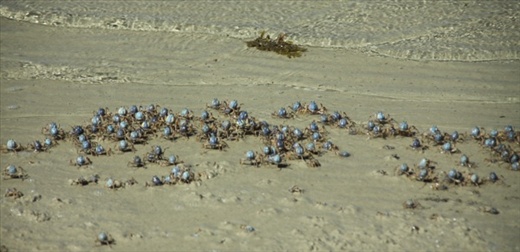They say "bitumen" here, with the accent on the first syllable. But whether you call it macadam, asphalt, or blacktop, it all ends here at Cooktown.
Cooktown is named for its most famous visitor, Captain James Cook, who landed here in 1770 when his ship, Endeavor, was damaged after hitting a coral reef. Even today, arriving in Cooktown has a sense of misadventure. There are no roads going south and only a pot-holed, wash-boarded, seasonally dusty or muddy road goes 900 km north up the Cape York peninsula.
We are here for the birding, which, unfortunately, didn't live up to our hopes despite some wonderful locations. The more birds you have seen the less likely you are to see a new species. Especially if you have limited time.
Cooktown has a great botanic garden with a trail that leads to scenic Quarantine Bay. Keating Lagoon, just outside of town, looks like a Monet water lilies painting and Archer Point at the end of a terrible 11 km dirt track is one of the prettiest beaches we have seen, mangroves and palms around a crescent of white sand. The beach stone curlew, our target, was absent but there were thousands upon thousands of marble-sized soldier crabs, marching in formation towards the water.

After two nights at the upscale Big 4 campground in town, we moved to the Endeavor River Escape, a "luxury" bush camp; hot showers but no electricity, plus 3 year-old Morgan, the heir apparent. Besides the campground the family also grows and packages passion fruit and breeds horses. The sites are peaceful, spacious and remote and the birding was OK, too. We finally saw the colorful wompoo fruit dove which puts Connie solidly above 2700 species.
